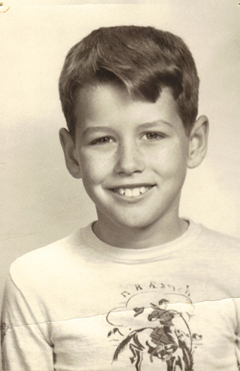For many years, ever since the personal computer became ubiquitous, we have heard prophets proclaim that books will soon be obsolete, that the new generation raised on video images will no longer be interested in reading books. Nevertheless, books survive, and new books are still being written and read. Even if books become obsolete in the future, the content of books will be transferred to some other medium and literature will survive in another form. No matter how far we look into the future, humans will need a way to share stories, and the sharing of stories is the essential basis of literature. Literature enables us to share the passions of Greek and Trojan warriors in the 12th century before Christ, and of Hebrew prophets and kings a few hundred years later. Literature will remain as the way we embalm our thoughts and feelings for transmission to our descendants. Literature survives when the civilizations that gave birth to it collapse and die. All through our history, literature and religion have been closely tied together. It is literature that gives longevity to religion. Religions that have no literature may come and go, but the Jewish Torah and the Christian Gospels and the Muslim Koran endure through the millennia. The more successful of the new religions of recent times also have their sacred books. Latter-day Saints have their Book of Mormon, Christian Scientists have their Science and Health with a Key to the Scriptures, and the Marxists have their holy scripture too.
Elaine Pagels is an example of a scholar who has enlarged our view of religion by detailed study of the associated literature. She translated and elucidated the collection of ancient scrolls that were discovered hidden under the desert sand in a wine jar at Hag Hammadi in Egypt. Her book The Gnostic Gospels is a popular account of her work, explaining the origins of these early non-canonical texts and the new light they throw on canonical texts which later became the Christian Bible. Pagels is not a scientist. Her skills and her tools have little to do with science. She is a linguist and a historian. Her skills are intimate knowledge of the Coptic and Greek languages, and her tools are literary and historical analysis. Her work has given us a new picture of the Christian religion as it existed in early times before orthodoxies were rigidly imposed and heresies stamped out. This glimpse of a different Christianity has had great influence in broadening the scope and style of Christian thinking. It helps to free Christianity from the dogmatism of past centuries and resonates well with the new generation of students who call themselves Christians but feel more at home with heresy than with orthodoxy. The notion of complementarity can also be used to reconcile heresy with orthodoxy, to reconcile the view of Jesus seen in the Gnostic Gospel of St. Thomas with the new views seen in the orthodox Gospels of the New Testament. The various Gospels give us different views, but they are views of the same Jesus.
Elaine Pagels has been a discoverer of spiritual knowledge according to Sir John Templeton's definition. I hope there will be more scholars like her, learned in the languages and histories of other cultures and other religions, who will devote their lives to discovering and interpreting other documents that were forgotten long ago or condemned as heretical. If we could recover some of the ancient heretical literature of other religions and make it accessible to students in the modern world, as Pagels has recovered and explained the suppressed literature of the Christian religion, we might succeed in broadening the outlook of all religions. With a broadened outlook, our diverse religions might be better able to live together in peace. Believers in each religion might come to see that all religions are complementary, giving us different views of the same reality seen from different angles.
One of the finest Christian heretics was William Blake, whose poems and prophesies were not suppressed but ignored in the eighteenth and early nineteenth centuries...."
-
* To read the first article, click here. To read the second article, click here. And to read the third article, click here.
(Note: You can view every article as one long page if you sign up as an Advocate Member, or higher).





